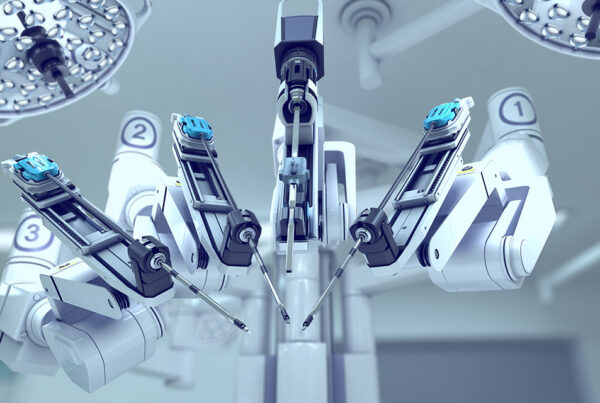This is the second piece in our series of articles titled Lessons Learned from the Pandemic, a review of the issues that we have dealt with in the healthcare industry over the past two years. Health crises and their economic consequences, social impact, new ways of working, virtuality, and new forms of health care are some of the big issues we will be looking at in this series.
In this second installment, we will be looking at digitalization in health and the new role of the patient, both of which are topics tied to the digital transformation the sector has been experiencing, but which the pandemic has made us rethink.
LESSON 1: DIGITALIZATION IN HEALTH IS HERE TO STAY
The changes and the digital transformation that the industry has been through have been accelerated by the pandemic: virtual health care; patient follow-up through apps; deals struck in meetings on Google Meet or Zoom; trainings for physicians on how to use devices through virtual-reality sessions; the list goes on. However, despite having advanced a great deal in the way patients receive treatment and the way the health system helps keep everything running, there is still much to be done.
In one of our studies conducted through HospiScope, we classified telehealth (TH) into four main categories: participation in TH when the hospital has a telehealth program; TH centers when there is a center with specialists that the hospitals connect to, such as centers of excellence in other disciplines; medical monitoring (spoke TH), when the hospital has a system connected to the service provided by the TH center at which the specialists are located; and international TH, when the hospital takes part in international TH.
In HospiScope we have extensive data about equipment and technology for almost 90% of hospitals in Latin America, so our figures should be fairly representative of the resources available in the region.
According to our analysis, approximately:
- 15% of hospitals in Latin America have a telehealth (TH) program
- 9% of hospitals in Latin America are connected to a TH center
- 6% of hospitals in Latin America provide that service to patients through a system of medical monitoring
- 1% of hospitals in Latin America form part of international TH
These data remained stable between 2020 and 2021. There is clearly a big opportunity in this segment. In line with our analysis, Meet Technology Review has conducted a survey in which 95% of those interviewed say that telehealth is a fundamental element to take into account in the transformation.
Health and technology have been working together for some time, but the need to speed up these processes in order to expand access to health has led to the automation of tasks, which meant that human involvement could be used in cases where it is necessary. So, for example, apps have been created to provide monitoring on patients with non–life threatening illnesses, and improvements have been seen in user experiences with regard to chronic patient monitoring and hospital appointment systems. This in turn meant that health-care personnel, nurses and doctors, would provide their time and knowledge to those who really needed it.
Another of the opportunities we have identified in the health digitalization process is the use of analytics (data analysis), key to information-based decision making, which in many cases is generated by the patients themselves. However, we still have a long way to go: for example, according to data from Global Health Intelligence (GHI), 36% of health companies in Latin America already have some kind of strategy for prevention and vigilance, while the other 64% are still at the initial stages of developing this strategy.
We have a great window of opportunities before us for technology companies to start out on a pathway we have already seen in several sectors. Xsensio has developed a device for monitoring athletes’ sweat and detecting potential health problems, while HEMOTUNE promises to regenerate blood to prevent the death of patients from infections and intoxication. Despite these advances, as we mentioned in the first article in this series, to achieve an effective health system in the long term, the focus of attention must be on preventive diagnosis and a primary-care strategy. In addition to heavy investment in development, data are key when it comes to knowing where to make investments.
At GHI we believe there are great opportunities, as health digitalization is one of the most important links in the chain moving forward, and the transformation should not become a missed opportunity. However, our data unfortunately show that, for many organizations, TH has just been a band-aid that has helped at a difficult time, rather than an opportunity to bring about real change. Time will tell why a qualitative leap could not be achieved, but at a glance it appears that it could be down to our cultural habits.

LESSON 2: THE PATIENT IS NO LONGER A SPECTATOR AND NOW PLAYS A LEADING ROLE IN THEIR OWN MEDICAL HISTORY
The patient has taken on an active role, both in their diagnosis and their treatment, and their empowerment forces us to change our communication strategy. The ways in which organizations and physicians relate to patients are completely different than what we were used to.
Today, it is easy to google a symptom and draw conclusions about it—as an enormous number of people do—but the misuse of tools can lead to a number of problems. Are we ready to assume this change? Is the excess of information positive or negative?
Integrating the technology and the patient into health systems speeds up the clinical investigation process, achieving greater efficiency and increasing the development of medical devices and drugs that cover unmet needs. On the other hand, along with technology we are seeing the rise of medfluencers (social influencers concerned with medical topics), a new channel in which different health professionals share their knowledge through the various social networks.
At GHI, we have found that most multinational health companies have patient-education programs and campaigns ranging from fundamental topics like obesity to more technical questions such as laparoscopic procedures. These programs tend to be long-term, as their main goal is to change habits, and none of them are carried out in isolation. People in the industry talk about the 5 Ps: Patient, Physician, Purchase Manager, Payer, and Policymaker. The most successful patient-education programs look for points of contact with each of these players.
For a long time, the patient was not part of the conversation about their own health, and one of the main challenges today is for doctors, who feel they have power over the health of their patients and do not want to let go of it, to release medical histories and allow the digitalization of medical files.
Patients nowadays want to have a bigger role within the health sector, not only to give their opinion about their own condition, but also to help and protect those who are newly diagnosed. In this context they have set up groups to share experiences and lessons learned, generating a space for positive exchange that challenges traditional medical care.
We are clearly at a pivotal moment with respect to the health sector that has never been so exposed. The industry needs new standards, and technology can provide that leap of quality and integration that is required by putting the patient center stage and reinforcing ethical considerations.
Next Steps
Contact us if you are interested in exploring further how these lessons are being applied, perhaps through a personalized study that will help you outline new strategies for your business or create new initiatives. We can also provide you with subscriptions to our data services, such as HospiScope, SurgiScope, LatAm Hospital Monitoring, and others.



